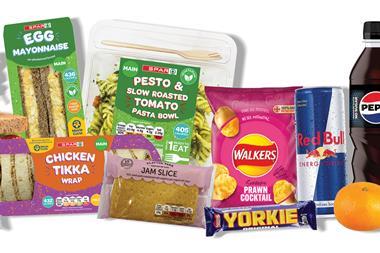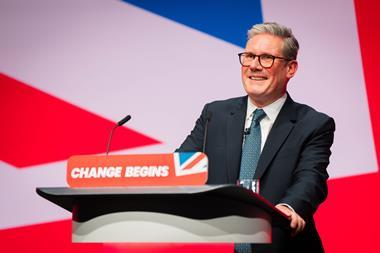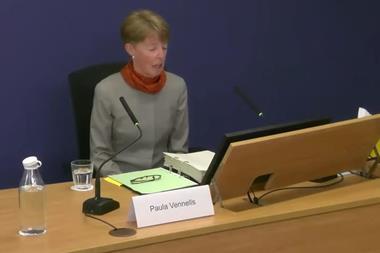Want to boost basket spend? Aidan Fortune looks at the in-store services that give shoppers the complete package
The customer is always right is the first rule of retailing the second is that the customer always wants more. In these cash-strapped, time-poor days, consumers expect more from their retailing experience and want to be able to do as much of their shopping as possible under one roof - along with paying their utility bills, topping up their mobile phone or Oyster card, putting money on a pre-paid credit card or even buying vouchers that can be used online so they’ll never have to worry about putting their bank details online.
As well as ensuring shoppers make you their first port of call, offering a lot of extra services means retailers can see basket spend increase by 27% on average (HIM 2011 Convenience Tracking Programme), and that’s on top of the additional money spent on the service itself.
However, the secret to all this success is to link in-store services with other categories, rather than treating them in isolation.
PayPoint managing director Seamus Smith points out that retailers can use bill payment services to boost sales of their grocery categories. “PayPoint is able to add advertising, promotional and information messages at the end of its receipts,” he explains. “These ‘TAGs’ are often used by suppliers for product promotions such as money off, bogof or free product, which can frequently only be redeemed at shops with PayPoint terminals.
“TAGs can also be used by retailers, including symbol groups, during in-store promotions, helping retailers to tie in their PayPoint services with their traditional products. For example, the TAGs could take the form of a redemption voucher offering 50p off the next purchase of a 2ltr bottle of milk.”
Smith adds that customers can also be targeted through their mobile phones. “PayPoint also has a tie-in with mobile marketing companies such as i-movo and Shop Scan Save,” he says. “These companies work with suppliers or retailers to send customers barcoded vouchers on their phones, which can be redeemed only at PayPoint terminals, drawing new customers into a store.”
Epay head of marketing Hetal Patel agrees that retailers can make more of in-store services by tying in grocery products with the services offered, but that retailers need to make customers aware. “We’ve just launched Sony Entertainment Network vouchers through Epay, enabling people to pay for them in store and safely buy music, films and games online,” she says. “This will bring new types of customers into the store and retailers have the opportunity to upsell snacking products if shoppers are having a movie or games night.”
She says that retailers need to make sure they are really pushing their services to customers. “They need to ask every customer if they want a mobile phone top-up,” says Patel. “It only takes a couple of seconds to do, but it’s another service to the customer.”
Payzone sales director Mark Mellor agrees that retailers should be shouting about the services they have. “Display pos material in a clear and prominent position to make customers aware of the services that a store has,” he advises. “With some simple promotional activity, the consumer will become aware of the service, and if there is an incentive such as cross-category tie-ins then they are more likely to use it again.”
Cash in hand
For retailers who really want to encourage their customers to spend money in their store, they may consider installing an ATM. South Yorkshire retailer Ron Ford installed Cashzone ATMs in three of his Costcutter stores and hasn’t regretted the decision.
In the 12 weeks since installing the machines, Ron has noticed a 60% reduction in banking and cash-in-transit charges and a 15% average increase on cash spend in-store. The machines, which charge consumers £1 to use and are retailer-filled, have proved a great investment.
“An ATM really is a no-brainer,” says Ron. “My greatest investment was giving up a couple of square feet of space which couldn’t have been put to a better use.”
Ron says that getting the most out of a cash machine isn’t a difficult job. “The trick is to never let it get empty, so you establish a reputation for reliability,” he says. “The supplier does all the real work - I just fill the machines up! Having secure cash storage on-site turns a burden into a saving, and getting another revenue channel is the cherry on top!”
Cashzone business development director Tim Halford says that retailers can see £3,000-£5,000 annual profit from a cash machine. “The machine has a footprint of 2sq ft,” he says. “Plus, on average 20% of the money withdrawn will be spent in the store.”
Store owners have several options when it comes to choosing which set-up to go for a free-to-use or a fee-paying machine. Halford says the decision depends on a store’s location. “If it’s a busy convenience store with lots of competition, I suggest having a free-to-use as it’s important to get people into your store, but if there’s no other machines nearby, retailers have the potential to charge for its use,” he says.
Retailers also have to decide between a self-fill or supplier-filled machine. Notemachine sales director Charlie Evans advises retailer to go for self-fill wherever possible. “A self-fill ATM allows the retailer to recycle their surplus cash through the machine, avoiding bank charges,” he says. “Very little is required from the retailer, apart from a commitment to make it work. With a self-fill machine they would need to find sufficient funds to keep it fully operational, and agree who has the responsibility for filling it. They would need to complete a simple close procedure and empty the machine of cash at the end of the day. With a fully managed machine all services are provided by the supplier.”
Halford says that having a cash machine can also help stores become a hub for their community. “People need access to their money and with bank and post office branches closing, this is becoming more difficult,” he says. “Providing them with easy access helps you to offer customers an additional service.”
For those stores worried about becoming a target for criminals, Evans has some reassurances. “All sites undergo a full feasibility and security survey before an installation can proceed. This will look at issues such as alarms, physical security of the building, shutters and CCTV. NoteMachine offers security advice and risk management information as a matter of course with its customers.”
Safety first
Unfortunately, it’s not just ATMs that are at risk. Convenience Store’s agony aunt Jac Roper is frequently contacted about bill payments scams designed to trick retailers out of their hard-earned cash. Smith and Mellor are keen to make sure retailers do everything by the book so they aren’t put at risk. “As well as initial training and the handbook, we regularly tell all of our retailers that PayPoint transactions must only take place when a customer has made a cash payment in person - no payment should ever be processed over the telephone, whatever hard luck story they hear or if a caller says they are from PayPoint,” warns Smith.
Mellor agrees and advises retailers never to perform a transaction without the customer being present.
“Retailers should follow the terminal prompts in place to ensure that they have received
the money before pressing ‘yes’ on the ‘cash received?’ prompt,” he points out.
A common scam targeting bill payment agents is when they’re contacted by parties claiming to be from the operators. Smith says that this will never happen and to report these calls immediately. “We never contact retailers by telephone to do anything to the terminal - whatever the pretext, such as to update it, test it, install new functionality, fix a bug or anything else a caller says they need to do,” he says. “Even though the caller can be very plausible, they are persuading the assistant to put transactions through the terminal.”
“Payzone will also never ask a retailer to perform a test transaction,” adds Mellor. “We advise retailers to be vigilant to suspicious behaviour and always verify who they are talking to if somebody is visiting the store claiming to be from Payzone. If a retailer has any concerns they simply need to call our helpline immediately.”
Smith says that any official PayPoint representative, including those installing signage or other equipment, will have some form of ID. “Nevertheless, we strongly urge retailers to contact us on 08457 600633 before allowing any visitor to touch the terminal. Again, no genuine representative from PayPoint or an approved supplier will raise an objection.”
Smith urges retailers to spread the word to all staff members. “It is important that these rules are passed on to every member of staff who uses the terminal, especially new starters and part-time employees,” he adds.
Financial matters
As with any category, offering additional services is not without its problems. One of the main issues dogging the in-store services industry is the level of commission offered to retailers. Nisa retailer Kishor Patel conducted an analysis of the commissions he earned at his Bedfordshire stores over six years of having PayPoint and found that, after bank charges, the service barely broke even. Despite generating a forecasted £3.8m-worth of PayPoint sales, Kishor’s margin was less than 0.6% after paying bank charges.
“I’m a big fan of payment services, but the margins I’ve earned have almost halved since I introduced the service, and the transactions going through my store have almost constantly increased,” he says. “I understand that it drives footfall and brings people into the store who may not normally do so, but as it stands I would probably be better off having PayPoint shares than having it as a service in my store. We need to show our providers that we want a fair commission for the work we do.”
Dennis Williams of Broadway Premier, Edinburgh, agrees that retailers want fair payment. “We know that services bring in footfall. We just need fair payment for the work we do,” he says.
PayPoint believes that the commissions offered to retailers are “competitive given the market”, and says that it always strives to ensure a fair balance between all parties. It added that it has paid out £500m-worth of commission to retailers between 2004 and 2010.
Local heroes
As part of a three-year £1.3bn investment plan to revitalise the Post Office network, the Local format was created to allow Post Office services to be sold solely through the retail counter. Retailers can receive up to £10,000 to help with the installation.
The Local offering is currently being trialled in 166 stores and David Brown, of Crawcrook Stores in Tyne & Wear, was one of the first to install it. He is delighted with the results. “It brings in extra customers and provides something extra for people in the area,” he says. “There’s been about a 6% increase in turnover since we introduced it.”
Mark Hayward of Yatton Kennell Post Office in Wiltshire converted to the Local model and says it has been well received by his customers. “We used to have the security screen in here before we converted, but we’d never go back to that way of working now,” says Mark. “The longer opening hours and the fact that our staff can serve groceries one minute, and help people with a recorded delivery the next, is a huge bonus. This has really made a difference to the community.”
Questions have been raised over the security of running the service through a busy convenience store counter, though. However, a Post Office spokesman says that all staff members are fully trained to run the service safely, and that regular risk assessments are conducted on stores involved in the scheme. He also allayed concerns over privacy by recommending that, where possible, retailers involved in the Post Office Local scheme create a queuing system that will maintain a sense of privacy.




























2 Readers' comments